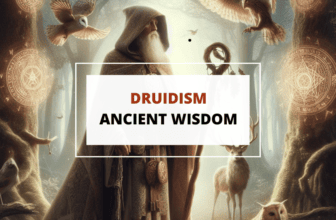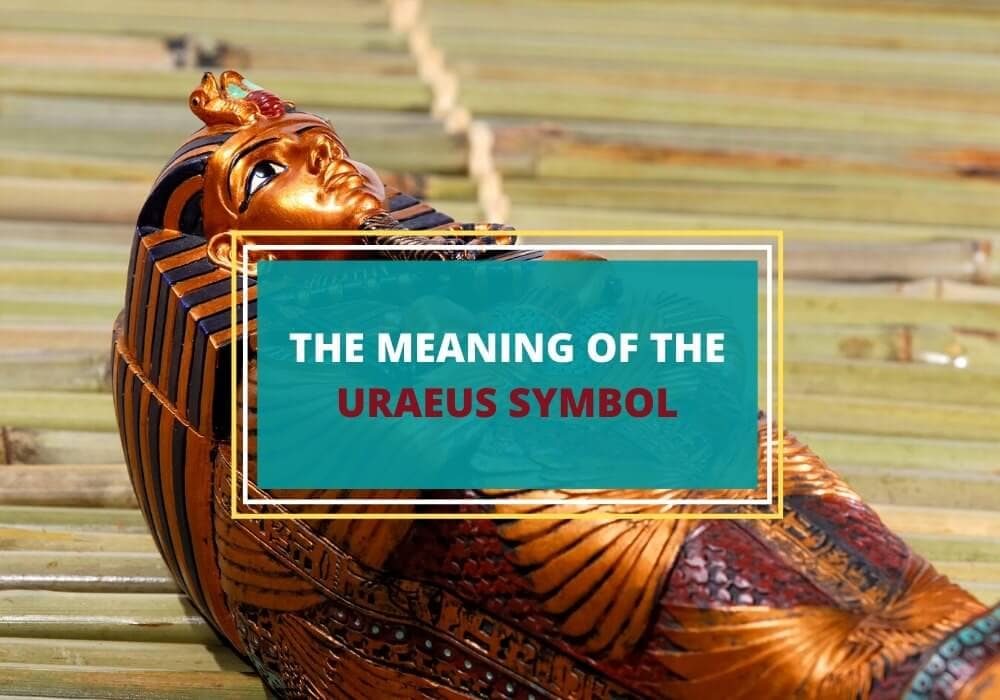
Table of Contents
The Uraeus symbol is one most of us have seen in its 3D form but it’s rarely represented in two dimensions nowadays. If you’ve ever seen an Egyptian pharaoh’s sarcophagus in a museum, a picture of it online, or a similar representation in a movie, you’ve seen the Uraeus symbol – it’s the rearing cobra with an open hood on the forehead of the pharaoh’s sarcophagus. A symbol of royalty and sovereign power, the Uraeus is one of the oldest symbols in Egypt.
Uraeus: History and Origins
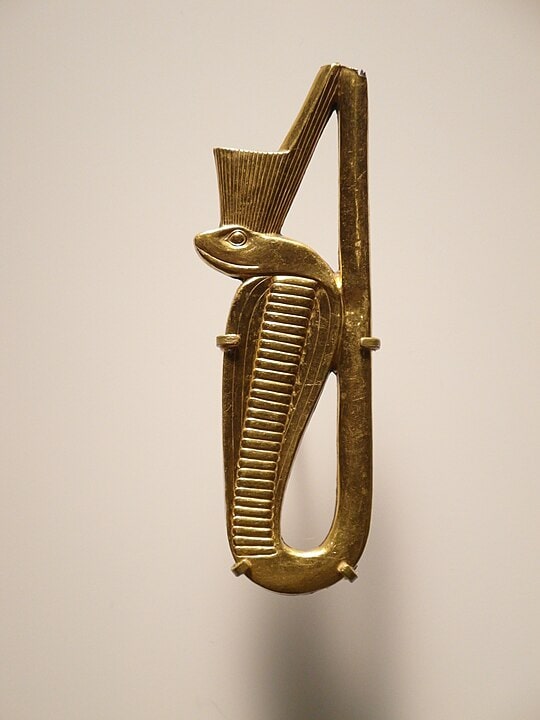
While the symbol of the uraeus is Egyptian, the term uraeus comes from Greek – οὐραῖος, ouraîos meaning on its tail. In ancient Egyptian, the term for the uraeus was iaret and it was related to the old Egyptian goddess Wadjet.
A Tale of Two Goddesses
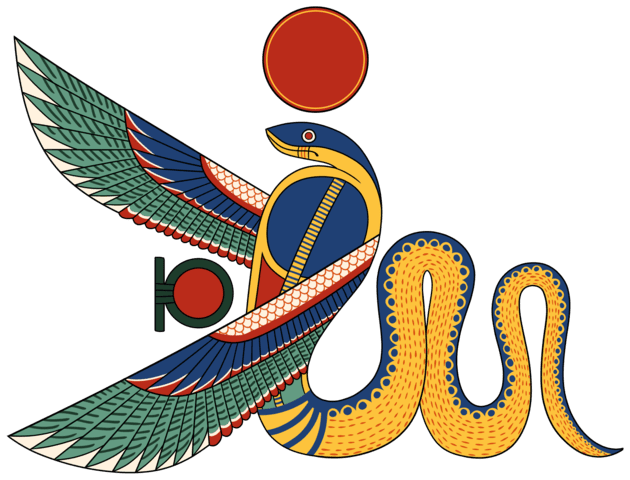
Wadjet was often depicted as a cobra as she was the serpent goddess. For thousands of years, Wadjet was the patron goddess of Lower Egypt (today’s northern Egypt at the delta of the river Nile). The center of her cult was in the city Per-Wadjet, at the Nile Delta, later renamed to Buto by the Greeks.
As protector goddess of Lower Egypt, Wadjet’s symbol, the iaret or the Uraeus, was worn as a head ornament by the Lower Egypt pharaohs at the time. Later on, as Lower Egypt unified with Upper Egypt in 2686 BCE – Upper Egypt being in the mountains to the south – Wadjet’s symbolic head ornaments started being used together with that of the vulture goddess Nekhbet.
Nekhbet’s white vulture symbol had been worn as a head ornament in Upper Egypt the same way as Wedjet’s Uraeus. So, the new head ornamentation of the pharaohs of Egypt included both the cobra and white vulture heads, with the body of the cobra and the neck of the vulture entangled with one another.
Together, the two goddesses became known as the nebty or “The Two Goddesses”. The unification of the two religious cults in such a way was a pivotal moment for Egypt as it helped bring the two kingdoms together once and for all.
Incorporation into Other Beliefs
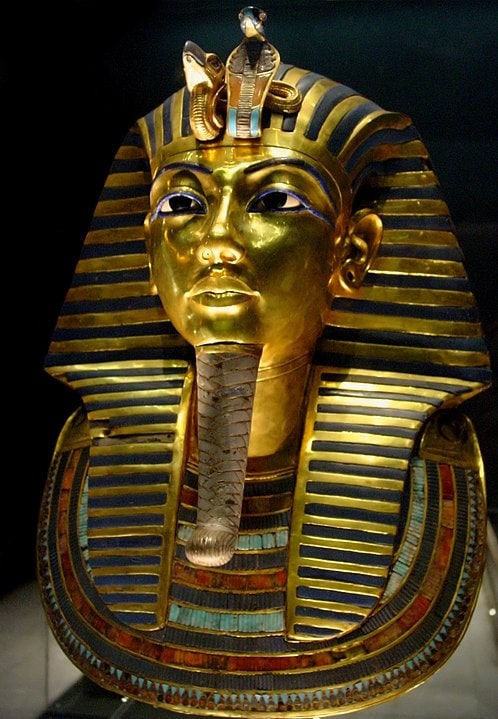
Later on, as the cult of the sun god Ra gained strength in Egypt, pharaohs started being viewed as manifestations of Ra on Earth. Even then, the Uraeus continued to be used as a royal head ornament. It’s even believed that the two cobras in the Eye of Ra symbol are two Uraei (or Uraeuses). Later Egyptian deities such as Set and Horus were depicted carrying the Uraeus symbol on their heads, making Wadjet “a gods’ goddess” in a sense.
In later Egyptian mythology, the cult of Wadjet was replaced by cults of other deities that incorporated the Uraeus into their own myths. The Uraeus became associated with the new patron goddess of Egypt – Isis. She was said to have formed the first Uraeus from the dirt of the ground and the spittle of the sun god and then used the symbol to gain the throne of Egypt for Osiris.
Symbolism of the Uraeus
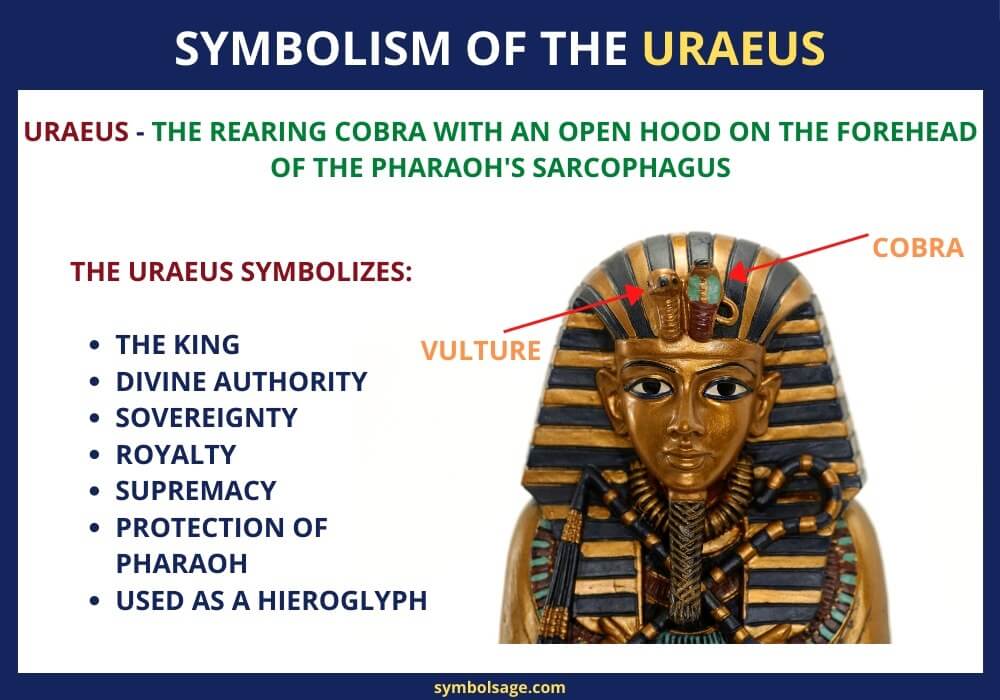
As the symbol of the patron goddess of Egypt, Uraeus has a pretty clear meaning – divine authority, sovereignty, royalty, and overall supremacy.
- Divine Protection: The Uraeus primarily symbolizes divine protection. The rearing cobra was believed to spit fire at the enemies of the pharaoh, protecting him from all evils and threats. This protective function extends to the gods and goddesses it adorns, reinforcing their divine nature and their role in safeguarding the natural and cosmic order.
- Royal Authority: Worn by the pharaoh on his crown, the Uraeus was a clear indication of his or her sovereignty over Egypt. It accentuated the pharaoh’s divine right to rule and was an emblem of the monarch’s inherent power. In modern western culture, snakes are rarely seen as symbols of authority which may lead to a bit of a disconnect with the symbolism Uraeus. Yet, this symbol doesn’t represent just any snake – it’s the king cobra, a potent symbol of power.
- Symbol of Rebirth: Snakes, in many cultures, including ancient Egypt, are symbols of rebirth due to their shedding of skin. The Uraeus, in this light, can also be seen as a symbol of regeneration and the cyclical nature of life and time.
Importance of the Uraeus
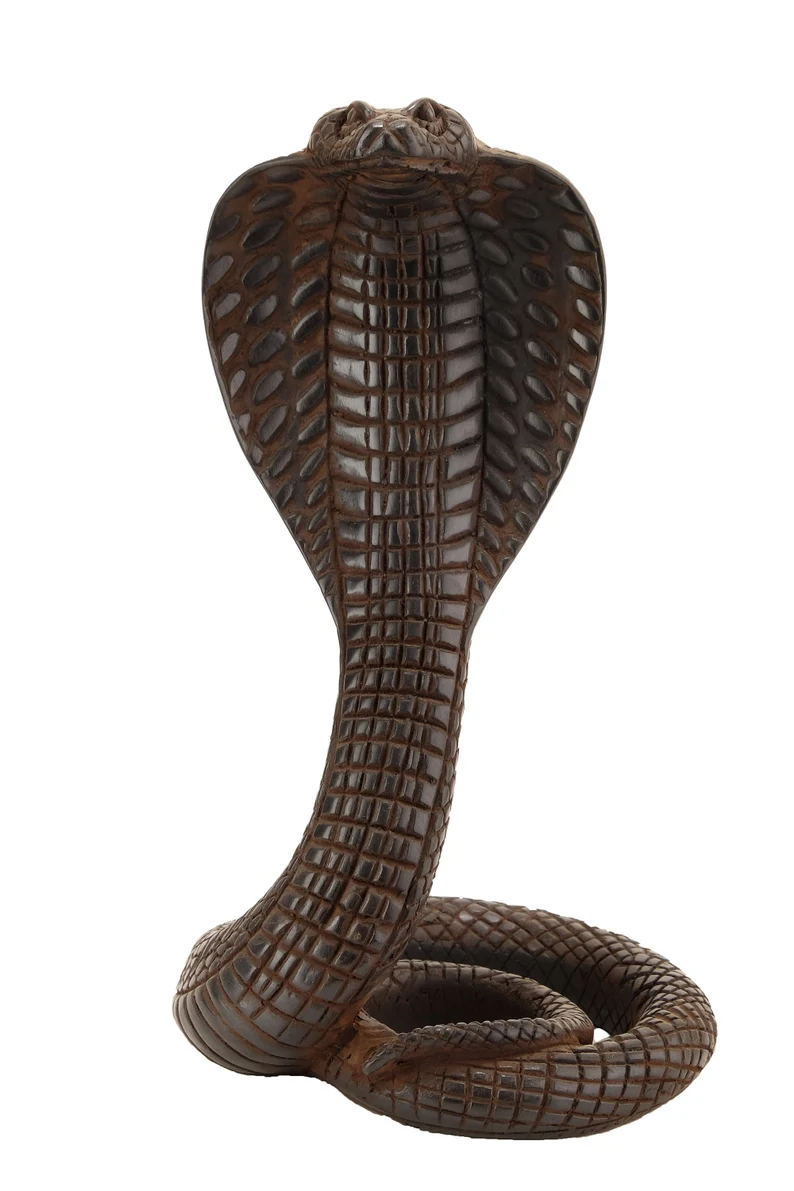
As a hieroglyph and an Egyptian symbol, the Uraeus is one of the oldest known symbols to historians. That’s because Wadjet predates most other known Egyptian deities. It has been widely used in Egyptian and subsequent writing in many ways. It has been used to symbolize priestesses and deities such as the goddesses Menhit and Isis, among others.
The Uraeus was also used in the Rosseta stone to symbolize the king in the story told on the stone. The hieroglyph has also been used to represent shrines and other royal or divine buildings.
Wadjet’s symbol was also believed to bring protection to the pharaoh. The goddess was said to spit fire through the Uraeus on those who would attempt to threaten the pharaoh.
The Uraeus in Art
The most famous use of the Uraeus is as the ornament on the ancient Egyptian Blue Crown royal headdress also known as the Khepresh or the “War Crown”. Aside from that, the other most famous artifact with the Uraeus symbol on it is probably the Golden Uraeus of Senusret II, excavated in 1919.
Since then, in modern artistic representations of ancient Egyptian mythology and pharaohs, the Uraeus symbol is an integral part of any depiction. And yet, probably because of how common the cobra/snake symbol is in other mythologies, the Uraeus doesn’t get as much pop-culture recognition as other Egyptian symbols.
Nevertheless, for anyone interested in or familiar with ancient Egyptian symbols and mythology, the Uraeus is one of the oldest, most iconic, and unambiguous symbols of power and authority.
Related articles
15 Egyptian Symbols – And What They Signified (With Images)
Hedjet: More Than Just a Crown in Ancient Egyptian Culture
The Ba: Ancient Egypt’s Symbol of Soul and Immortality
Duat: Egyptian Underworld and Realm of the Dead







